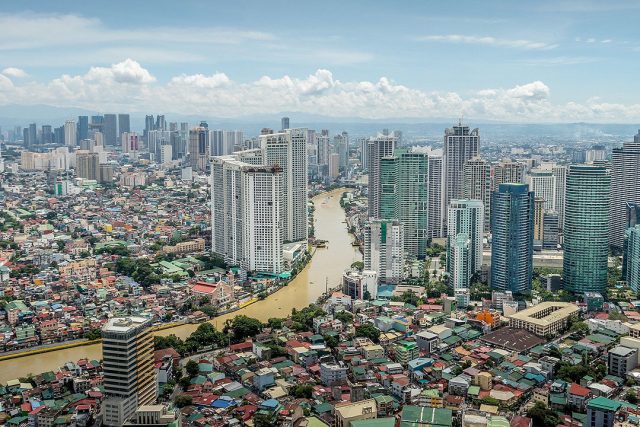The thesis of this article is that capitalism is a strong force for development but we aren’t harnessing it enough.
Adam Smith articulated capitalism’s positive contribution to society in Wealth of Nations. Individuals pursuing their respective self-interest will lead to a social good and the efficient allocation of resources. Even Marx didn’t deny that capitalism led to advances in science and the “productive forces.” What he decried was the alleged “exploitation” of the wage workers who produced the goods for the capitalists.
Let’s acknowledge it: Capitalism produced the iPhone, robots, electric cars, drones, Space X, and other technological marvels that have made life more comfortable for us than it was for our parents. Without capitalism too, would the world have gotten vaccines in less than a year to combat a novel virus? Using the new technology of gene editing, Moderna and Pfizer, two private companies, developed a vaccine in record time — in less than a year, although previous vaccines took four years or more to be approved and get to market.
True, the US government had a role too. It developed “Operation Wrap Speed” under which various pharmaceutical companies raced to be among the first to develop vaccines to get emergency use authorization. However, the fact of the matter is that the pursuit of self-interest led to the mobilization of capital and resources to produce something that society sorely needed.
The rise of China is powerful proof of the power of capitalism to transform societies. From being a Third World country in the 1970s, through the power of capitalism, introduced by Deng Xiaoping under the guise of “socialism with Chinese characteristics,” it has transformed itself into a technologically advanced world power and, in the process, brought millions out of poverty. It was Deng who said that “I don’t care if the color of the cat is black or white if it catches mice,” and “let some people get rich first,” which were code words for the Chinese Communist Party embracing capitalism.
The agricultural revolution in China started with a very capitalistic reform: the Household Responsibility System, introduced by Deng. The Household Responsibility System enabled farmers to keep what they produced (the household unit was responsible for its own profit and loss), in contrast to the state-directed rural commune system. After the reform, viola! A capitalist reform dramatically increased output, transformed the countryside, and laid the foundation for China’s industrial revolution.
Why am I saying that we aren’t harnessing capitalism enough? I’m not referring to the crony capitalism and the rent-seeking capitalism that’s dominant today in the Philippines today. Crony capitalism is the kind you see being practiced in the Pharmally scandal, an unfit company awarded billions by the government in contracts without bidding because of its political connections. No capital is being put at risk, just “laway” or saliva.
Rent-seeking capitalism, on the other hand, is pursuit of guaranteed profit. It’s guaranteed because a franchise, a tariff, or, in the case of the telco and transport industries, Constitutional restrictions to foreign competition, virtually guarantee their monopoly profits without fear of competition. It’s like a company that somehow owns all the air and charges people for breathing it.
Yes, that’s also pursuit of profit, but society isn’t enriched by it. That’s not true capitalism but rent-seeking capitalism.
We have established that capitalism is a powerful force, but we aren’t using it enough. We aren’t using it to solve our problems in agriculture, education, forestry, and many other industries.
Take, for example, agriculture. What’s the state of agriculture today? It’s mainly peasant, production for use (instead of the market) agriculture. The average age of farmers is 53. Average education is Grade Five-level. Average land size is 1.2 hectares, with many farms at less than a hectare. Because the farm incomes from paltry land sizes using traditional methods of agriculture is so low, many are just part-time farmers, supplementing their income by working as tricycle drivers or other off-farm work. How can they increase productivity if they are just part-time farmers?
Farm labor, though, is growing scarce. Ask farm owners in the countryside, although this is also supported by evidence. With Build-Build-Build, and an opportunity to work in rural construction, farm labor is growing even scarcer. This means that any farm that wants to expand must mechanize, but the small plots of land make mechanization inefficient and unprofitable.
What’s the way forward toward farm modernization? According to Dr. Marife Ballesteros, an expert on land reform and agriculture in the Philippine Institute of Development Studies (PIDS), the way forward is commercial farming or agri-business. Yes, capitalistic, for-profit agriculture. We need agricultural capitalists who will use capital, technology, and management to produce agricultural products for sale (not for own consumption) at a profit. This is a far cry from the traditional farming relying on carabaos and rain-fed farming.
These commercial farms need not be plantation farms. They can be family farms, but they must be given the freedom to expand, which under CARL (Comprehensive Agrarian Reform Law), they aren’t allowed to. For example, if the economics of mechanization dictate that they must cultivate land sizes bigger than the five hectares they are allowed to own, they should be able to do so.
However, under the CARL, they aren’t allowed to go beyond five hectares. It’s not only illegal for agri-businessmen to own more than five hectares, but the law makes it difficult for them to lease land from other less productive farmers because of restrictions imposed by the state.
More capitalism isn’t the answer you get from our so-called farm leaders and politicians to our problems in agriculture. What you get from listening to them is a form of whining: If only government increases the agricultural budget, if only government supports cooperatives, if only there were more support services, if only government stops imports, etc., etc., then agriculture will post miraculous growth. This statist fantasy is an old song, one that has been sung for the past 50 years and has failed.
It’s more capitalism, not statism, which the countryside needs.
In education, capitalism is what made the Philippines a leading educational force in Southeast Asia, but the government is killing it with statist solutions. The private for-profit educational system in the tertiary level is what has attracted students from as far as Iran and Africa to come here, and not just for the English courses.
The remarkable thing about the private capitalist educational system is that it strives for efficiency and innovation. On the tertiary level, it produces qualified graduates at less than half the cost of what State Universities and Colleges (SUCs) do.
However, in education, we are moving toward more statism rather than capitalism. The Free College Tuition Law is an example. It subsidizes state schools, rather than poor students directly. Therefore, state schools are given money whether they perform well or not. Rich kids, such as those attending in the University of the Philippines, get the benefit of free tuition. That law is anti-poor because it ignores the fact that it’s not only tuition that prevents poor kids from attending school but living expenses too.
A capitalistic solution would have been to give the money as direct scholarships to the poor and let the poor decide which school — SUC or private — to attend. That would be a more efficient and capitalistic solution of educating poor students. It will force SUCs to compete.
The government has also given large increases to public school teachers, competing with private schools, but without demanding improved standards of teaching. PISA rankings show that the Philippines rank last among 58 countries in math and science competency.
As a result of the government moving away from capitalism, the private education system is in crisis. It will only be a matter of time before the Philippines loses its reputation as a center for good education.
Another industry that can use a dose of capitalism is forestry. Think about this: Whereas before it used to export logs, the Philippines now imports 75% of its wood requirements. Yet, the Philippines has a huge potential in forestry development: it’s in a tropical zone where trees mature faster, it has large swaths of denuded areas — at least 5 million hectares — that remain unplanted.
However, forestry development can be hugely profitable and is “the flavor the times.” The COP26 Climate Conference in Glasgow has declared a global objective of reforesting millions of hectares. Cheap climate finance is available for forestry development. Pension funds worldwide, because of their long investment horizons, are eager to finance forestry development and want them in their portfolio. (Harvard’s Endowment Fund has large holdings in privately developed forests).
Therefore, the potential is there. We just need to enable capitalism to work to replant our denuded forests, instead of focusing on logs bans and the government’s own tree planting program. (The Commission on Audit declared the P6-billion tree planting program a failure.)
However, capitalism works only if there are clear rules and stability of property rights. Forest investors aren’t going to invest in tree plantation, where the product takes 10 years or more to produce, if policies change with every administration. They should also be allowed to harvest what they planted, instead of the government over-regulating the harvesting of planted trees.
Capitalism in forestry need not be exclusive, i.e., exclude the lumads and other upland people who populate the forests. Lumads can be hired as caretakers of the tree farms, or, if they have valid CAD (Certificate of Ancestral Domain) titles over an area, royalties can be paid to their communities. That can all be factored in a capitalist’s return on investment. What capitalists can’t deal with is regulatory and property rights uncertainty.
To deal with declining forest cover, our government has resorted to more statist solutions: more regulations, industry-bans, and frequent changes in rules. The government also blames the industry whenever there’s a flood, even if it’s the sheer volume of rainwater that’s responsible for the flood. However, forest denudation is counter-intuitive to capitalism because the trees are investors’ inventory. Capitalists will seek to keep planting and replanting trees because that’s the source of their recurring profits. That’s the power of self-interest being beneficial to society.
The imagination is the limit of how we can harness capitalism to solve society’s problems. The PPP (Public Private Partnership) is a good program of harnessing the private sector, but it need not be limited to infrastructure only. Take public health. I’m proposing that there should be a PPP for public health, but the measure of accomplishment won’t be reimbursement of health claims, which can incentivize hospitalizations, but rather positive health measures, such as reduction in morbidity, reduction in hospital stays, in disease incidence or quality of life surveys.
More than at any other time, harnessing capitalism to produce growth and transform our society has never been more favorable. Capital has become very cheap and globally mobile.
On the other hand, we have what is increasingly growing scarce in the world — a young large population. (Thailand, for example, is fast ageing while South Korea’s fertility rate is 0.84, the lowest in the world, far lower than the reproductive rate of 2.1 to stabilize the population.) Combining capital with labor will produce jumps in output. In contrast, achieving growth is much harder for those countries with declining populations.
The problem has always been that we make it difficult for capitalism to work its wonders here: we prohibit foreign capitalism in strategic sectors, from public utilities to media; over-regulate the markets; make property rights unsecure; provide an uneven playing field; or don’t respect the sanctity of contracts.
True, there are abuses and excesses under capitalism, but that’s mostly due to crony and rentier capitalism or profit-making backed by political power. Or there are market failures, such as not incorporating the cost of environmental degradation, but that can be solved with proper state policies. However, the government shouldn’t kill the goose before it lays its golden egg.
Instead of risk-based and risk-adjusted policies to curb the abuses of capitalism, government has been wielding total bans: total log ban, total open pit mining ban, total ban on foreign ownership, etc. It’s a lazy and dumb way of managing risks.
So, “Is greed good” as Gordon Gekko says? Yes, if it can be channeled in the right way and if there’s a level playing field.
This isn’t a call to unbridled capitalism. There are anti-trust and other laws addressing market failures that could serve as guiderails for capitalism.
Growing inequality under capitalism is also a problem but it is a different one and requires a different response at a later stage. China has become more unequal (with a GINI coefficient of .465) but what can’t be denied is that it has raised hundreds of millions out of poverty and has become a technological and manufacturing powerhouse. After achieving growth and eliminating poverty, Chinese President Xi Jinping now talks of “common prosperity” and bringing the billionaires to heel.
Allowing capitalism to do its magic should be at the core of all presidential candidates’ economic programs. Instead, if you listen closely, this is what you hear: Agriculture? I will increase the budget for agriculture. Food security? I will ban rice and pork imports. Unemployment? I will end “endo.” Education? I will expand state schools. Energy security? I will reduce oil taxes. Health? I will eradicate corruption in PhilHealth and the health department (as if his or her appointees won’t do the same thing).
The fact of the matter is that the state is a weak force for modernizing and transforming the economy. Only capitalism can do the job.
If we want to eliminate poverty and achieve prosperity, we need to rely, not on the state, but on the transformative force of capitalism.
Calixto V. Chikiamco writes on political economy and is a board member of the Institute for Development and Econometric Analysis (IDEA).
totivchiki@yahoo.com











